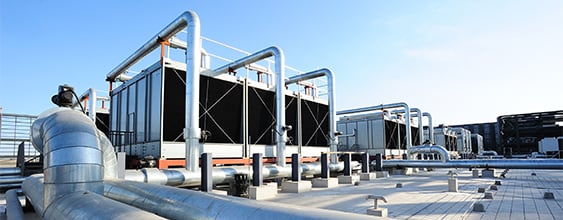With a growing interest in hospitals targeting the IWBI WELL Rating Tool (flexible framework for improving health and human experience through design), occupant wellbeing and the solutions and outcomes to benefit staff through building design is attracting greater focus.
WSP specialists, Brenda Kingston, Director – Sustainability; Manoje Indraharan, Associate Director – Technology Systems; Farah Deba, Senior Lighting Designer; and Tom Krikke, Associate, Sydney Acoustics Manager, discuss the key considerations to achieving occupant wellbeing for hospital staff. They also explore solutions demonstrating WSP’s Future Ready innovative approach to thinking beyond the conventional.
Tech Systems and Smart Solutions
“We are in the evolutionary stage of the Digital Hospital,” says Manoje. “Although we have seen several innovative and note-worthy deployments of technology in healthcare, in general the uptake of the digital solutions in the past has proven to be more aspirational than the norm. However, the impact of the coronavirus on society has shaken things up and we’re now seeing an increase in the use of technology within the healthcare sector to alleviate direct human-to-human contact, minimise potential virus transmission and improve workflows for staff.”
Examples of solutions that have become more prevalent include:
- Use of apps for scheduling appointments, conducting telemedicine consultations and receiving prescriptions.
- Improved workflow management tools to save time for staff and clinician repetitive tasks and provide time stamped record of activities.
- Extended use of Real-Time Location Services technology that enables direct communication with patients and staff through tracking data. Also used for tracking equipment.
- Increase use of Telemedicine which provides the benefit of not having to go to the hospital if unnecessary.
Smart solutions include:
- Integrated solutions that automate the check-in process, minimising wait times and administrative procedures. This is also helping with navigation throughout the hospital site and benefits both patients and staff.
- Smart sensors to monitor temperature, humidity, light levels as well as motion and noise. This information can be critical in ensuring that the space is comfortable and compliant, but also enables nursing staff to be alerted if a disorientated patient has wandered away, fallen and requiring assistance.
Brenda says, “On the Olivia Newton-John Cancer Wellness and Research Centre project, WSP included self check-in and personal navigation in our design principles to deliver improved wellness. Acknowledging that cancer patients often felt overwhelmed and vulnerable, particularly at the start of their treatment, providing a personal entry experience gave the option of self-management. This also provided a soft-registration process for the staff as an enabler to a positive entry experience for their patient.”
Thermal Comfort and Air Quality
Examples on the Olivia Newton-John Cancer Wellness and Research Centre project include:
- Access to balconies and the ability to open windows in the staff room, wellness centre and palliative care client rooms.
- Introduction of active chilled beams – ceiling mounted cooling coil where a small amount of primary air is delivered to the coil and room air is circulated through induction.
“This affect means less air is required to be distributed through the building, resulting in less energy use,” explained Brenda. “Infection control is also improved by removing the need to recycle air between rooms – which is common with a conventional VAV system. The outcome creates improved comfort conditions for the patients.”
Another example is the Echuca Regional Hospital project, where WSP introduced the use of variable geometry VAV diffusers into the design of the wards. Brenda says, “This gave each room independent cooling control, providing a healthier environment for both staff during their work hours and for patients to heal.”
Lighting and Acoustics
Examples of solutions through lighting to improve staff and patient wellness include:
- Maximising access to daylight either through access to natural light or the use of artificial skylights.
- Human Centric Lighting to facilitate the natural circadian rhythms.
- High performance lighting for operating theatres.
- Specialised schemes for highly technical areas such as MRI suites where ferrous materials cannot be used.
- Feeding back lighting data through the lighting control system or more centralised network to facilities management.
“Shift work affects the natural circadian rhythm of staff,” says Farah. “Creating lighting design that facilitates the natural circadian rhythm is a solution. New and continuous developing lighting technology such as Human Centric Lighting can create the appropriate environment with this effect through the use of Tunable White lighting and the variable light intensity utilised throughout the day and night. Access to daylight is important in maintaining our natural bio rhythms including circadian rhythms. Another tool to simulate daylight access in the absence of windows and skylights is to use artificial skylight panels combined with multifunction sensors to switch from natural daylight to artificial light when required.
“True colour rendering is vital for doctors when determining the condition of their patients. It is best practice to use lighting with colour rendering index, CRI 90 or higher in-patient care area. Colour temperature being the other critical component of light quality that is vital in health care environments. While the Australian Standards recommend the use of cool white 4000K(Kelvin) colour rendering for patient care and patient treatment area, any lighting design for a hospital should consider a balance of warm white and cool white colour temperatures where appropriate to create a calm, visually comfortable environment while supporting the task being undertaken in different areas within the hospital.
Tom says “Noise is also a common complaint in hospitals from patients and staff. WSP has included soundscaping design on projects in Finland, Scandinavia and New Zealand whereby noise levels are controlled in the nurses’ stations and break areas to provide them with respite from the ongoing hospital operational sounds.”
Mind and Community
How do we facilitate mental wellness for staff?
Brenda says “On the Olivia Newton-John Cancer Wellness and Research Centre project, nature was core to the design with positioning of the building to maximise the views. To benefit the staff, the design included different break areas to enable various practitioners to connect in the one space which overlooks a leafy valley. This helps staff engagement, enabling collaboration and building relationships, while also providing a break from the clinical environment.
“The importance of hospitals as part of the larger community, as opposed to just a building you go to when you’re sick, is a relatively new concept. Gone are the days when you were dropped off alone at the front door of the hospital. Today a hospital not only includes cafes and shops, but the coffee shop is also an extension to the building and used by the surrounding community.
“It’s time to start talking about reassessing the ‘value’ of the hospital by demonstrating wellness and not just in terms of energy savings. If you’re not able to demonstrate the environmental and social impact, you’re not going to get the investment to build the next hospital. Demonstrating wellness in terms of staff and patients is also about demonstrating strong investor performance for both government and private institutions. The focus is on retaining staff and avoiding patient rehospitalisation rates.”
WSP will further explore this topic in the ‘Occupant Wellbeing in Health’ People and Place Podcast which reframes the discussion through exploring how the design of healthcare facilities can support the healing and comfort of patients as well as promoting the health and wellbeing of staff to enable delivery of best level care for patients.
To stay abreast of our latest news, publications, videos and posts, please follow us on LinkedIn.















